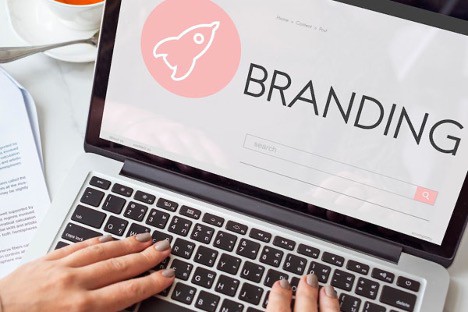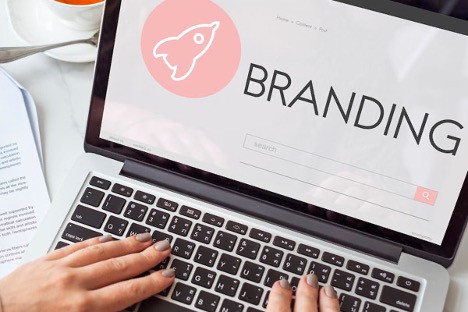The Business Case for Digital

About The Brand Enabled Podcast & all episodes
Welcome back to the show. I’m joined by Daniel Incandela. It’s good to see you.
It’s good to see you too. It is great to be here with you.
We were talking before the show. I tell everyone this is the sixteenth one, and you’re still the first person to come on the show and talk about a business case. Tell everyone what you’re doing, how you got here, and what’s happening for you.
I am the Chief Marketing Officer at a software company called ReachDesk. The way I describe that is that I get to market gift-giving. We’re an intelligent gift-giving platform. Companies use us to send gifts to potential customers or their employees. The fact is gifting works. One, because it’s a nice thing to do. It builds good human relationships, but it is proven to also help you build pipeline, close deals faster, and then accelerate relationships with customers and retention.
Gift-giving builds good human relationships. But it is proven also to help you build pipeline, close deals faster, and accelerate relationships with customers and retention.
We’re a satisfied customer. We didn’t know that before we got on the show. We use it when people use our brand center and they go live. We send them a congratulatory gift. It’s a great way to celebrate. It’s a great service. It’s great to have you. When you got to ReachDesk, what happened? You discovered you were doing some rebranding and moving around some pieces. Tell us your path to discovery of the problem.
My approach as a CMO is I would break it up into three parts. One is CMO is there to deliver pipeline. I keep my job. The second one, which is what we’ll talk about, is that I’m also here to help build a competitive brand. Lastly, I’m passionate about culture. I also think marketing should play a big role in the type of company we are in.
I joined ReachDesk as their first CMO as they were in the midst of a brand-new website and a brand refresh, which is one of my favorite projects. The team had done phenomenal work, so I take no credit for it. It was about relaunching the brand for the company. There were multiple stakeholders when we talk about that. There’s the internal side of it and then what you’re trying to do externally. We walked into that. We got to relaunch a new brand, which I love. Purple is not the easiest color, but the team did a good job with it. I’ll pause there because you’re going to ask more questions about branding here.
Many of the people tuning into this show have gone through or are going through a rebrand. You had a little bit different slant on it than most folks when you were trying to diagnose the problem. You were collecting some data. Can you tell everyone how that became an epiphanous moment for you?
I will say that I’ve been fortunate to be part of a number of rebrands. These are rebrands related to perhaps the product set evolving, changing, and needing to look differently to a company needing to have a refresher in the market, and rebrands because of acquisitions or mergers. I’ve had a good front-row seat to a number of these. All of them are a journey.

Competitive brand: A brand is a difficult concept to get for someone that’s not living and breathing it. It is a weird and tough thing to understand, but it’s about bringing people along on that journey.
Anyone that’s worked on these teams on the marketing creative brand side knows that it’s ultimately about getting approval so that you can keep going. These are hard projects because they can be so subjective. My approach is to bring people along on that journey, help them feel like they have a voice in shaping that. Ultimately, that’s what the brand is. It’s the manifestation of the company itself. Those are the voices internally. It’s also telling that story in terms of having everything buttoned up, like the timeline and the process, but also making sure you’re measuring the steps along the way as well as what happens once you launch.
You’re surrounding that story with things that people can’t understand. A brand is a difficult concept to get for someone that’s not living and breathing it. If you surround that with how people are involved in the process and the steps you’re taking to get to that final point, the way in which you’re going to measure, track, show success, and then involve them in that takes away some of the intimidation of branding. It is a weird and tough thing to understand, but it’s about bringing people along on that journey.
Selfishly, I did that because I want to move fast and get the approval to move on to the next step. If you’re not doing that, you get stuck in meetings where you’ve got ten opinions that you’re trying to synthesize. You can’t win in that situation. That’s a method I’ve used from the early days that have helped me stay sane, but also move fast and then be able to report back on what happened.
At Monigle, we use an ROI calculator and try and encourage people to do it. To me, what you’ve done successfully is what I call to set the enumerator. You identified some value that was going to come from it, like pipeline, brand relevance, customer acquisition, and whatever the metrics were in that portfolio of measures that you had to use to get every stakeholder on board. It helped justify the pace and speed of the investment. Is that a fair way to look at it? A lot of times, as brand people, we’re talking about it like, “This is how much it costs,” but we could probably do a better job and say, “This is the impact that comes from it.”
It’s also a challenge that B2B marketers face a lot. The demand gen strategy, which often gets the resources, money, and all of that, has to be tied to the brand strategy. You can’t do one without the other. They need to operate in harmony. Helping others understand that helps build the business case for you doing what you need to do with the brand and drive that strategy. It also helps people understand why it’s important to invest in the brand side.
The digital enablement part of a brand is critical for a company to be successful.
When you start talking numbers, pipeline, or lack thereof, then it’s going to get people’s attention. You have to invest in both sides. Otherwise, you’re not going to be successful. It becomes too one-sided. People still want to do business with a company that has a personality or a brand that stands for something. If that gets lost, then someone is going to pick a competitor.
At the core, you’re solving some human problem. They need to know that the personality or the humanity of the company matches their problem and then the demand gen accelerates. It almost becomes slightly less relevant because there’s so much authentic equity in the brand with the word of mouth, the experience they’re having, or the way they define the customer experience.
You’ve been around. You’ve got the data. You’ve pulled the team together. It sounds like apple pie and fried chicken. You’ll put on weight. What’s the problem? What’s the challenge we’re not talking about? What’s the thing we’re not telling these folks who are reading? Where’s the difficulty here? What’s the barrier that had to be removed to get this thing to work?
I’ve touched on this. I’d love your take as well from your perspective. I talked about the journey. You can’t do this well without the help and support of others in the company or potentially external stakeholders. Those can be customers, partners, or investors. You need them to be involved in the process. It’s also one of the hardest things to the point where you almost don’t want them involved because you want to move fast.
The project is always going to feel better if you have included them and brought them along for the journey. That is one of the hardest things. It’s not the brand research, the creative approach, or the final deliverables. Those are hard in themselves. It’s the relationship building and bringing the stakeholders along so that they feel a part of things. That is one of those things that isn’t discussed enough because it requires a bit of internal PR, relationship building, but also standing up for what you think is best for the company.

Competitive brand: You can’t do brand development well without the help of others in the company or potentially external stakeholders. The project will always feel better if you have included them and brought them along for the journey.
Altogether, those things are a delicate balancing act. It’s one thing I never take for granted. It’s the thing that can often derail one of these projects, but it’s also the thing that can help it move much more smoothly. I always focus on that and then let the brand experts and creatives focus on bringing the brand alive. That should be the fun part. They don’t need to know about the political side of it.
It’s two cycles of learning. One is learning what the end user needs and the other is learning what the internal stakeholders need. It’s the hardest thing. I’ve seen it dozens of times. When you’re doing these kinds of transformations anytime you’re rebranding, repositioning, or setting new values, you craft a new idea that you think has integrity in the market. Therefore, you have to stand in integrity with it when the organization’s pushing against it.
Usually, it’s the hardest moment days before launch. The closer you get, the more painful it can become. That’s where real brand leadership takes off. It’s by maintaining that vision for others and seeing their human problems like their fears, needs, and excitement. You’re connecting on that and giving them the information so that they can feel secure enough to join the journey.
It’s frightening. People have mortgages, kids in college, and things they need to pay for. It’s scary to go out on a limb. That’s my side of it. I see the human fear of it, but also I’ve seen so much joy when it happens. I have one final question. It’s a simple one. What is the one word you think of when you think of digitally enabling a brand and why?
The one word I’d use is critical. In this day and age, it is an assumption that every brand is digital or has strong components of that. When I think about pre and during COVID, this buzzword of digital transformation was real of companies having to either reinvent or catch up with the times. The digital enablement part of a brand, you have to get right. It’s critical for a company to be successful. It’s hard to get those things right like a good rebrand is hard to get right.
Thanks so much for being on the show. Readers, thanks for tuning into the show. I’m signing off. I’ll catch you next time. Thanks a lot.
Important Links
About Daniel Incandela
 Daniel Incandela is CMO at Reachdesk. A creative, strategic thinker, Incandela has more than 20 years of digital and marketing industry leadership experience. Incandela has led creative teams across myriad industries including the arts, sports and entertainment, sales, cloud and marketing automation, which has earned him industry awards and a designation on the prestigious Indianapolis Business Journal’s Forty Under 40 list. Incandela previously served as CMO at Conga, Return Path and Terminus, and held leadership roles at the Indianapolis Motor Speedway, ExactTarget and Salesforce Marketing Cloud.
Daniel Incandela is CMO at Reachdesk. A creative, strategic thinker, Incandela has more than 20 years of digital and marketing industry leadership experience. Incandela has led creative teams across myriad industries including the arts, sports and entertainment, sales, cloud and marketing automation, which has earned him industry awards and a designation on the prestigious Indianapolis Business Journal’s Forty Under 40 list. Incandela previously served as CMO at Conga, Return Path and Terminus, and held leadership roles at the Indianapolis Motor Speedway, ExactTarget and Salesforce Marketing Cloud.